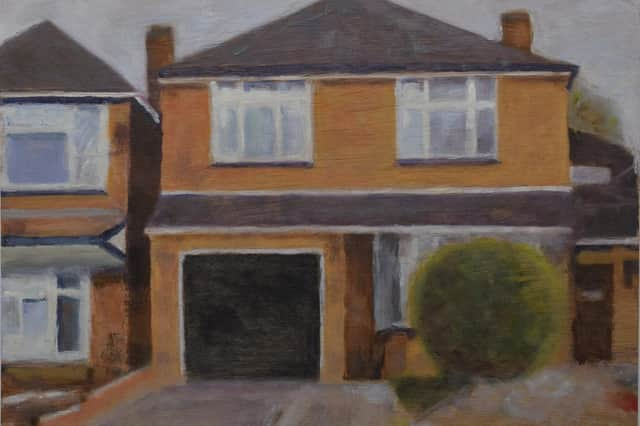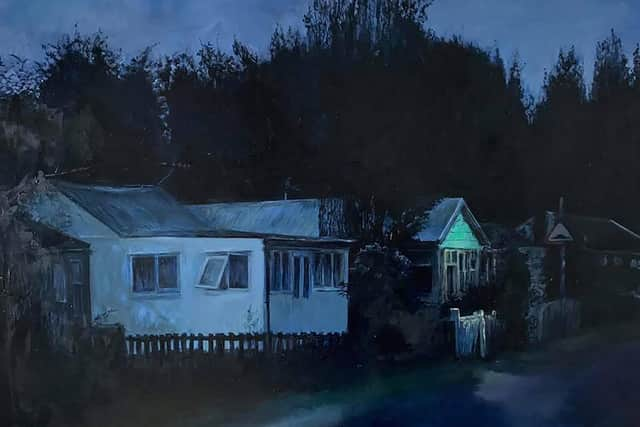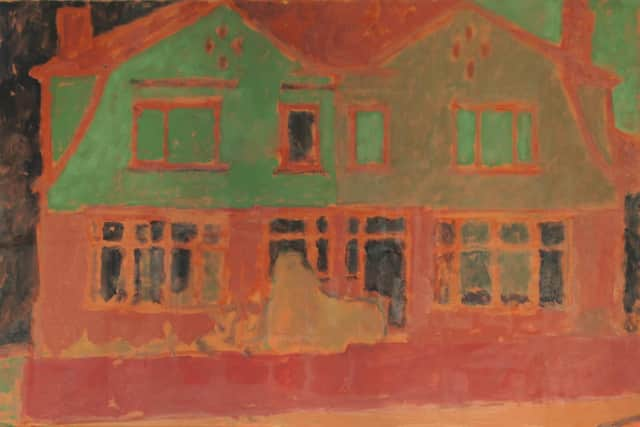Opening of a new art exhibition exploring where we live


We tend to think of landscape art as depicting rural scenes celebrating the natural world but a new exhibition in Sheffield explores the beauty that can exist in the built environment.
Opening tomorrow at the Millennium Gallery, Where We Live highlights some of the overlooked and under-regarded aspects of our surroundings bringing together the work of five artists focussing on five locations across England – Sheffield, Leeds, London, Lincolnshire and Northumberland.
Advertisement
Hide AdAdvertisement
Hide Ad“I’m really interested in the idea that paintings can bring us to look at familiar things in a different way and lead us to see what we hadn’t seen before,” says Trevor Burgess, one of the artists involved, who initiated the project and curated the exhibition. “In a way, by painting something, it enables it to be seen.”


Burgess’s own work – selected paintings from a series of 60 he made of residential housing in London – is displayed alongside work by four other artists: Mandy Payne, Jonathan Hooper, Narbi Price and Judith Tucker.
Each of the artists have chosen to paint a specific place over a long period of time, closely considering it as an artistic subject while exposing tensions between legacies of the past, the reality of the present and possible visions of the future. Sheffield-based Payne has spent nine years pictorially documenting the city’s famous Park Hill flats, a Grade II* listed council estate and one of the finest examples of British Brutalist architecture. Over the past decade Hooper has exclusively focussed his painting on the observation of urban and suburban Leeds. Price’s work focusses on Ashington in Northumberland, once the world’s largest mining village, while Tucker’s ongoing series Night Fitties centres on contested coastal chalet plotlands in North Lincolnshire which date back to the early 20th century.
“My series A Place to Live was inspired by estate agents ads in newspapers,” explains Burgess. “What I wanted to do was to get away from that commodification of homes as property and instead think of them as places to live.”
Advertisement
Hide AdAdvertisement
Hide AdThis exploration of the notion of home and community – at a time when we have all been largely confined to the places we live – has taken on an extra layer of resonance over the past two years.


“The project was conceived before the Covid pandemic struck, but I think its focus on the idea of what home looks and feels like will be something that I’m sure many viewers will connect with,” says Burgess. “We are living through multiple displacements and disorientating political, social and environmental change.”
Two of the artists – Payne and Tucker – have collaborated with poets Helen Angell and Harriet Tarlo, visiting residents in Park Hill and the Lincolnshire Fitties to record their thoughts and feelings about where they live. The resulting poems read by Angell and Tarlo, which can be accessed by visitors to the exhibition, give voice to the communities who inhabit the depicted locations.
“Although there are five different artists from five different places, there are many cohesive themes and connections between the works,” says Payne. “On a personal note, I am absolutely delighted that my Park Hill paintings might be seen by the people who lived there in the past and who live there now.”
Where We Live, The Millennium Gallery, Sheffield, January 15-June 5.